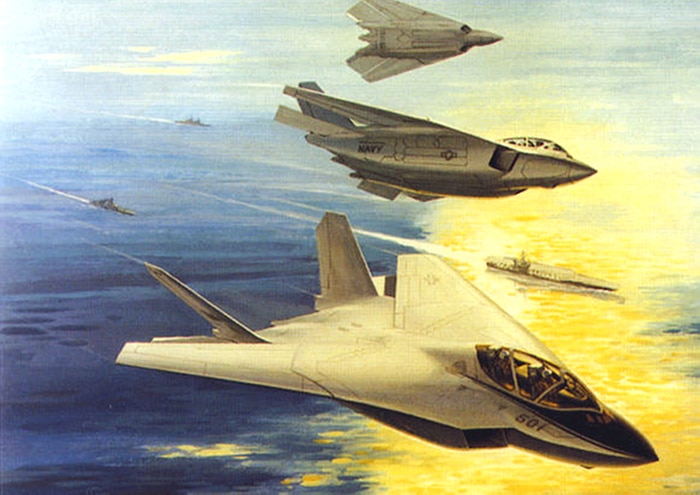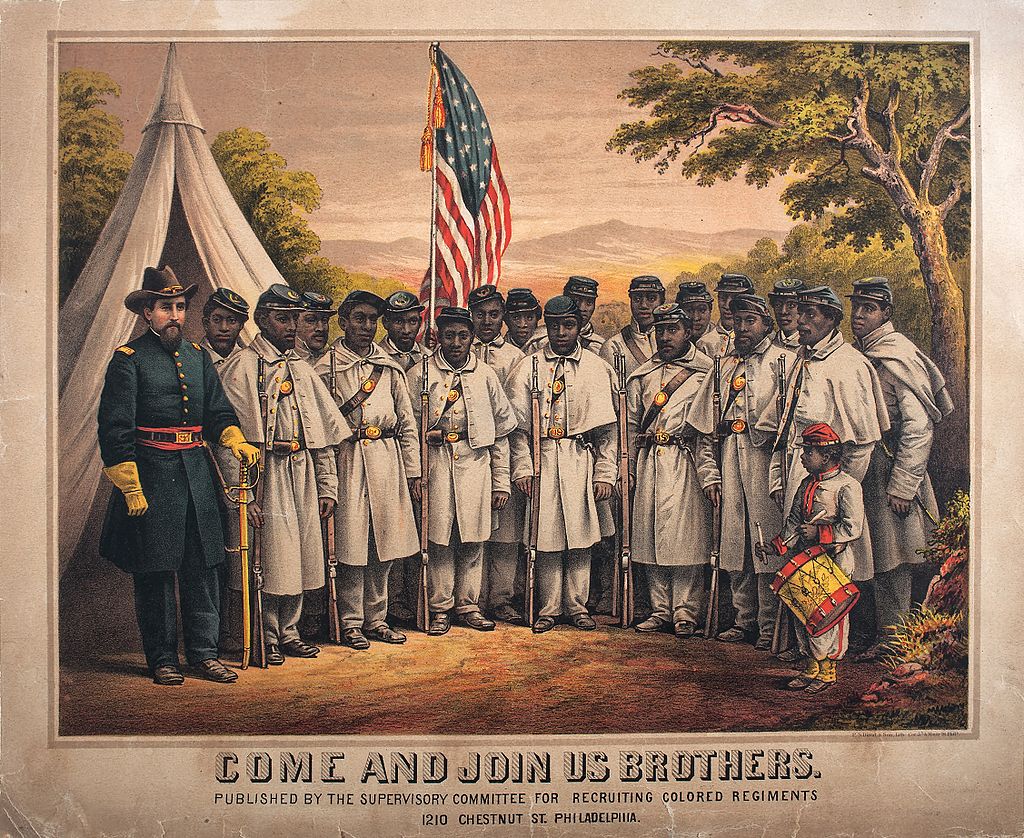The best fighters America *almost* put on aircraft carriers
- By Alex Hollings
Share This Article

America’s Nimitz- and Ford-class aircraft carriers represent the nation’s most potent form of force projection, with fleets of F/A-18 Super Hornets and stealth F-35Cs standing by on each massive flight deck to deliver more combat power than can be mustered by entire nations. But while these fighters were chosen specifically for their ability to both perform in the air and withstand the rigors of hard carrier launches and landings, not all of the fighters Uncle Sam has tried to cram onto his fleet of flat tops were well suited for the job.
Over the years, the Pentagon has repeatedly tried to shave dollars off its top-line budgets by taking fighters designed for the long, well-manicured runways of the Air Force and converting them for the rough-and-tumble world of naval aviation. This approach, of course, culminated in the Joint Strike Fighter program — an effort that sought to field a single multi-purpose fighter for the Air Force, Navy, Marines, and a laundry list of foreign partners. And while the F-35 that resulted eventually proved to be a technological marvel, the program’s myriad budget overruns and technical setbacks seem to have been more than enough to scare the Pentagon away from making the same mistake again.

Today, the U.S. Navy and U.S. Air Force both have next-generation fighters in development, both of which are being designed under the auspices of the Next Generation Air Dominance (NGAD) program and with the goal of sharing a number of modular internal systems… but each branch is careful to explain that these programs are maturing independently and will eventually produce different platforms — seemingly as a direct effort to avoid comparison with the Joint Strike Fighter acquisition debacle.
But the F-35 was far from the first fighter lawmakers or Pentagon officials tried to make work for both branches. Here are the jets that paved the way for the Joint Strike Fighter concept, and why they ultimately failed where the F-35 managed to succeed (by burning through budgets like jet fuel).
Related: The military aircraft America *almost* bought iceberg
Vought 1600: Putting the F-16 on aircraft carriers
The F-16 Fighting Falcon has been the U.S. Air Force’s workhorse fighter for more than 40 years, and at one point in 1975, it looked like a carrier-capable version would do the same for the U.S. Navy.
In order to meet the needs of the Navy, the Vought 1600 was larger than the F-16A. It stretched some three feet longer, with a 33-foot three-inch wingspan that was a full two feet broader than the Air Force’s version of the fighter. The breadth of the wings grew, covering a total of 269 feet and giving the aircraft better stability at lower speeds. The fuselage was flattened a bit and made broader, and its canopy was designed to pivot forward. Although this was different from the F-16, this design can now be found on the F-35.

In order to withstand carrier landings, heavier-duty landing gear was affixed to the Vought 1600’s undercarriage alongside standard carrier equipment like a landing hook. The fuselage itself was reinforced and in order to offer the engagement range the Navy needed, a pulse-doppler radar for beyond-visual-range targeting was also added.
All told, the structural changes needed to make the F-16 into the Vought 1600 added more than 3,000 pounds to the aircraft. Further changes were made to the fuselage and wings as subsequent iterations of the Vought 1600 came to fruition. The V-1602, for instance, had even more wing area at 399 square feet, and was given a heavier GE F101 engine.
You can read the full story about the efforts to fly the F-16 off of aircraft carriers here.
Related: Vought 1600: The plan to put the F-16 on America’s carriers
The F-15N Sea Eagle

The F-14 Tomcat may be a legendary fighter that got the Hollywood treatment in 1986’s Top Gun, but for a short time in the 1970s, the Navy considered tossing the Tomcat in favor of flying the F-15 from its aircraft carriers instead.
In order to make the F-15 suitable for carrier duty, McDonnel Douglas made a number of significant changes to the Eagle’s design. The F-15A, like many modern fighters, already had a tailhook intended for use on short airstrips or in an emergency, but a carrier fighter needs to rely on its hook for every landing, so a larger reinforced hook was added. To make for easier storage below deck on carriers, the Sea Eagle’s wings would fold up at a 90-degree angle a bit more than 15 feet from each tip.

The landing gear would also have to be swapped out for a more rugged set that could withstand the abuse of carrier landings on a rocking ship. McDonnell Douglas said they’d set about designing the new gear if the Navy wanted to move forward with the aircraft.
With these changes incorporated, the F-15 only gained a paltry 3,000 pounds which, combined with better maneuverability, a higher top speed, and a much lower price, all made this new Sea Eagle sound like a pretty good deal. But there was one glaring shortcoming: Capable as the F-15N may have been, it couldn’t carry America’s latest and greatest air-to-air missile, the AIM-54 Pheonix, limiting its ability to engage Soviet bombers at long range — which was the role this platform would be intended to fill.
You can read the full story about the efforts to fly the F-15 off of aircraft carriers here.
Related: Sea Eagle: America’s plan to put the F-15 on aircraft carriers
NATF-22 Sea Raptor

The U.S. Air Force’s wildly capable F-22 Raptor is often described as the world’s most potent air-superiority fighter, but for a short time, it was nearly joined by a sister platform modified specifically for the Navy in the NATF-22.
Lockheed’s YF-22 design was already so promising years before entering service that Congress pressed the Navy to consider adopting a sweep-wing version of the new fighter under the NATF (Naval Advanced Tactical Fighter) program that began in 1988. Had the U.S. Navy opted to pursue a carrier-capable variant of the F-22, there would have been a number of significant technical hurdles to overcome. Aircraft designed for carrier operations have to manage a very different set of take-off and landing challenges than their land-based counterparts and the Raptor’s stealth made external design changes both complex and pricey.

The fuselage needed to be more physically robust to withstand the incredible forces applied to aircraft during catapult launches and short-distance landings, which would also need to be supported by a tailhook at the rear of the aircraft. Further, the NATF-22 would have to leverage the same sort of variable-sweep wing approach found on the F-14 to grant the aircraft the ability to fly slowly enough to safely land aboard a carrier.
It stands to reason that the variable-sweep wing design would compromise some degree of the aircraft’s stealth. If the connecting surfaces of the moveable wings produced a high enough return on radar to secure a weapons-grade lock on the aircraft, the value of such a fighter would be fundamentally compromised.
And while the F-22 may be fast and maneuverable, the Navy’s existing F-14 Tomcats were faster. Perhaps most damning of all, despite their high maintenance costs, the F-14 Tomcats were still significantly cheaper than building a new stealth fighter for the Navy’s flattops, even if it was borrowing heavily from the Air Force’s program.
Read the full story about the efforts to fly the F-15 off of aircraft carriers here.
Related: Sea Raptor: The Navy’s sweep-wing F-22 that wasn’t to be
F-117N

In 1993, four years after the U.S. Air Force unveiled the Nighthawk to the world, Lockheed approached the U.S. Navy with a proposal for a carrier-based iteration of the famed “stealth fighter.” This new F-117N would be a low-observable (stealth) all-weather strike aircraft. At the time, it seemed like a logical progression for America’s air power.
Seemingly aware that the operational F-117 wasn’t the most capable combat aircraft, Lockheed’s new pitch offered a drastically improved iteration of the platform, complete with double the internal payload capacity of the first.

The wings would be given a 42-degree sweep, rather than the Nighthawk’s 50-degree, and would extend out 50% further, to 64 feet. At the tail of the aircraft, additional horizontal ailerons were added to make it more manageable at the low speeds required for carrier landings.
Not satisfied with the Nighthawk’s top speed of right around 680 miles per hour, Lockheed looked to the more powerful F114 engines that would later find a home in the Super Hornet. These afterburning turbofans built by GE produced 13,000 pounds of thrust under normal operation and as much as 22,000 pounds with the afterburner engaged. Using a pair of these engines in the Seahawk would have made it significantly faster than its Air Force sister, and potentially could have pushed all the way into supersonic flight.
Read more about the F-117N here.
Read more from Sandboxx News
- The veteran and the beard – Like peanut butter and jelly
- Military explores new uses for AI as capabilities explode
- Russian military is using suicide tanks to stop Ukraine’s counteroffensive
- Why did Colt produce the M5 family of rifles?
- Today’s Artificial Intelligence isn’t quite what you think (but it’s still crazy)
Related Posts
Sandboxx News Merch
-

‘AirPower’ Classic Hoodie
$46.00 – $48.00 Select options This product has multiple variants. The options may be chosen on the product page -

‘Kinetic Diplomacy’ Bumper Sticker (Black)
$8.00 Add to cart -

‘Sandboxx News’ Trucker Cap
$27.00 Select options This product has multiple variants. The options may be chosen on the product page

Alex Hollings
Alex Hollings is a writer, dad, and Marine veteran.
Related to: Airpower, Breaking News, Military Affairs

How an F-15E scored its only air-to-air kill… with a bomb

The military roots of Juneteenth and why we celebrate it

Air Force gives us a glimpse of its new AGM-181 LRSO nuclear missile

Israel wipes out Iranian F-14 Tomcats on the airstrip
Sandboxx News
-

‘Sandboxx News’ Trucker Cap
$27.00 Select options This product has multiple variants. The options may be chosen on the product page -

‘AirPower’ Classic Hoodie
$46.00 – $48.00 Select options This product has multiple variants. The options may be chosen on the product page -

‘AirPower’ Golf Rope Hat
$31.00 Select options This product has multiple variants. The options may be chosen on the product page -

‘Sandboxx News’ Dad Hat
$27.00 Select options This product has multiple variants. The options may be chosen on the product page
